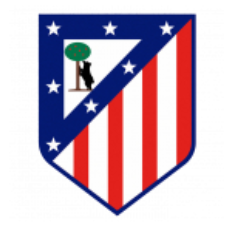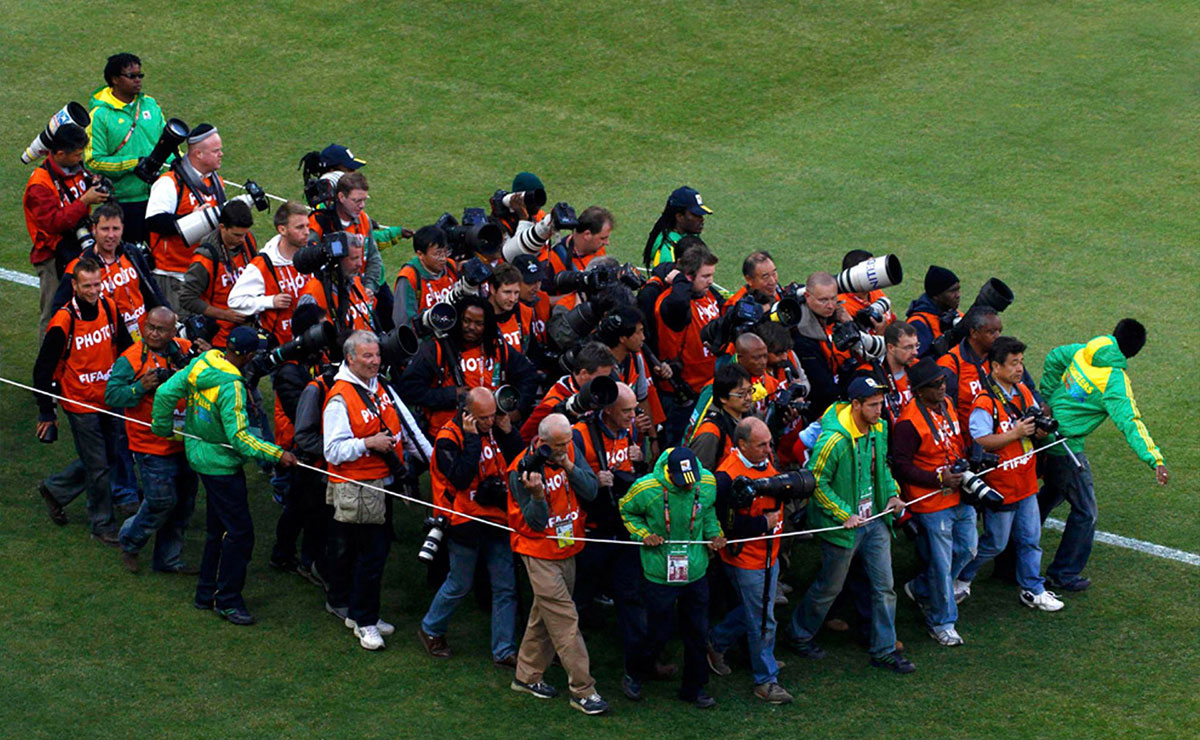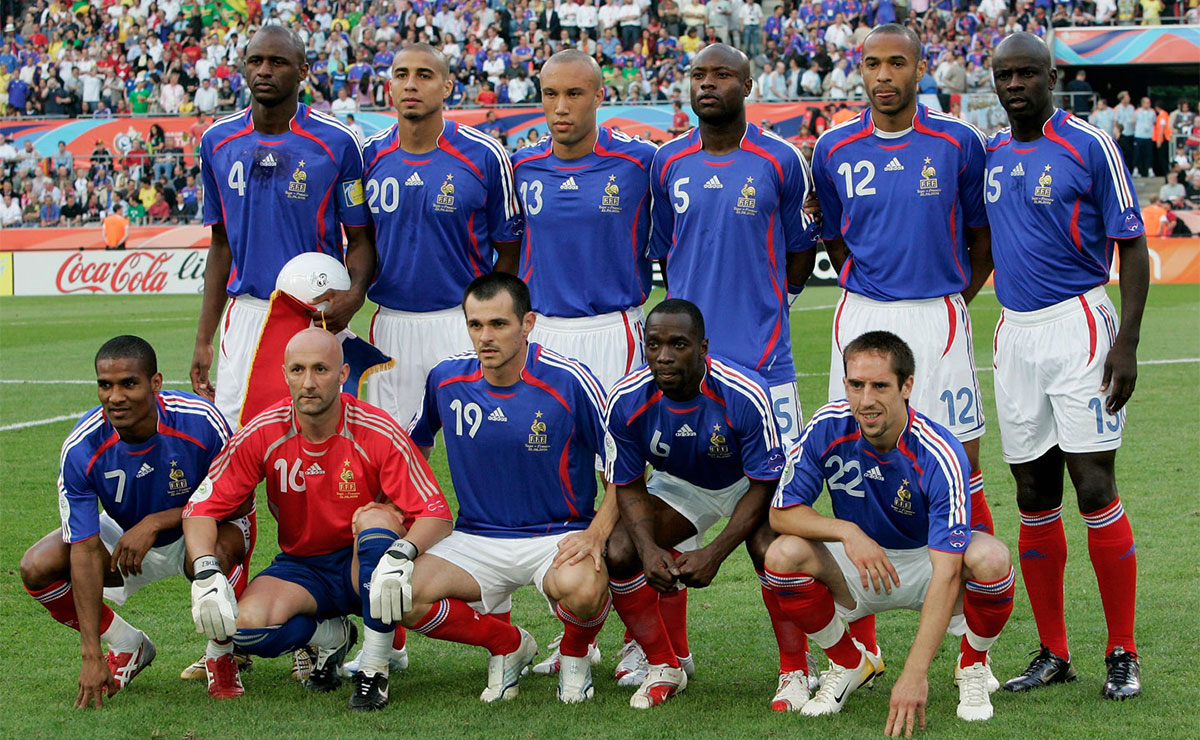1903
Established in
33
Champions
26
Current Players
Atlético de Madrid: A Comprehensive Guide to the Club’s Legacy
Whether you’re a die-hard football fan or just discovering the game’s beauty, Atlético de Madrid stands out as a cornerstone of Spanish football. Known for its gritty style and passionate supporters, this club has a rich history woven into La Liga’s fabric. From legendary players to unforgettable matches, our post will explore what makes Atlético de Madrid an enduring force in soccer. You’ll learn about their most significant achievements, the fierce rivalries, and the unique culture that fuels the Atlético spirit. Ready to dive into the heart of Madrid’s most resilient team? Let’s get started.
History of Atlético de Madrid
Atlético de Madrid, often referred to simply as Atlético, is one of Spain’s most cherished football clubs. With its rich history and passionate fan base, the club has become significant in Spanish and international football. Let’s take a look at their story through different eras.
Founding and Early Years
Atlético de Madrid was founded on April 26, 1903, by a group of Basque students living in Madrid. Initially, they saw the club as a youth branch of Athletic Bilbao, another legendary Spanish football team. This connection with Bilbao didn’t last long, but it set the foundation for the club’s future.
In the early years, Atlético struggled to make a mark. They played their games in borrowed fields and faced financial difficulties. Despite these challenges, they managed to attract a loyal group of supporters. Eventually, they found stability and started to compete in regional leagues.
Here are a few key moments from the early years:
- 1904: Atlético played its first match against Real Madrid, starting a rivalry that continues today.
- 1911: The club adopted red and white stripes for their kit, inspired by Athletic Bilbao.
- 1921: They moved to their first stadium, Metropolitano, their home for decades.
Rise to Prominence
The 1940s and 1960s were golden eras for Atlético de Madrid. The club began to show its might, winning league titles and making its mark on European football.
Achievements in the 1940s
- 1940: Hiring of coach Ricardo Zamora, a legendary figure in Spanish football.
- 1941: Atlético won their first La Liga title, a huge milestone.
- 1949-1950: Secured back-to-back league titles, asserting their dominance in Spanish football.
Achievements in the 1960s
- 1962: Won their first European trophy, the UEFA Winners’ Cup.
- 1966: Another great success, winning La Liga once again.
- Regularly contending for domestic and European titles, Atlético established itself as a powerhouse.
Recent History
The resurgence of Atlético de Madrid can be credited mainly to Diego Simeone’s arrival as head coach in 2011. A former player, Simeone, brought a fresh approach that transformed the team.
Impact of Diego Simeone
- Tactical Genius: Known for his defensive tactics, Simeone ensured every player worked hard on the field. This method, known as “Cholismo,” emphasized grit and teamwork.
- Key Achievements:
- 2012: Won the UEFA Europa League, reigniting the club’s hunger for trophies.
- 2014: Secured the La Liga title, breaking the dominance of Real Madrid and Barcelona.
- 2016: Reached the UEFA Champions League final, showcasing their ability to compete with Europe’s elite.
Under Simeone, Atlético has become a consistent contender for top honors. The club’s modern success has brought new fans and cemented their status as one of football’s great teams.
Atlético de Madrid’s history is a tale of struggle, perseverance, and triumph. The club’s journey, from humble beginnings to modern-day successes, inspires football fans worldwide.
Club Achievements
The story of Atlético de Madrid is rich with triumphs and unforgettable moments. Let’s dive into their significant achievements across different competitions.
La Liga Titles
Atlético de Madrid has clinched the La Liga title 11 times. Some key seasons stand out:
- 1939-40: Their first league title was a significant milestone in the club’s history.
- 1965-66: During this season, Atlético emerged as champions, disrupting Real Madrid and Barcelona’s usual dominance.
- 1995-96: A golden year for Atlético, as they won La Liga and the Copa del Rey, completing a historic double.
- 2013-14: The team triumphed under Diego Simeone’s management, breaking a long-standing duopoly.
- 2020-21: Another stunning victory showcasing resilience and tactical brilliance.
Copa del Rey Success
The Copa del Rey has also seen Atlético de Madrid’s excellence. The club has won this prestigious cup 10 times. Notable victories include:
- 1961: This win marked their emergence as a serious contender in Spanish football.
- 1991: The final against Mallorca was a thrilling match that ended in Atlético’s favor.
- 1996: As mentioned earlier, this victory was part of the club’s remarkable double-winning season.
- 2013: The memorable final against Real Madrid, which ended with Atlético lifting the trophy in Santiago Bernabéu, was an iconic moment.
European Competitions
At the European level, Atlético de Madrid has left an indelible mark. Their achievements in the UEFA competitions are impressive:
- UEFA Europa League: They have won this competition thrice (2010, 2012, 2018). Each victory highlighted their prowess and strategic gameplay. The 2010 win was particularly notable as it was their first major European trophy in 48 years.
- UEFA Champions League: Though they have not won the title, Atlético reached the final in 1974, 2014, and 2016. Each of these runs to the final was filled with drama and showcased their never-give-up spirit. The 2014 and 2016 finals against Real Madrid were nail-biting affairs still discussed today.
These domestic and international achievements underscore Atlético de Madrid’s status as one of the giants of European football. Their history is a tapestry of hard-fought victories and unforgettable matches.
Stadium and Fan Culture
Atlético de Madrid is more than just a football club; it’s a community united by passion and pride. One of the central pillars of this unity is the club’s iconic home ground, Wanda Metropolitano. Equally vital to the club’s identity are its loyal supporters, who create an electric atmosphere that few stadiums can rival.
Wanda Metropolitano
Wanda Metropolitano is the heart and soul of Atlético de Madrid. Opened in 2017, this stadium can hold over 68,000 fans, making it one of the largest arenas in Spain. Modern and sleek, it features state-of-the-art facilities, including a retractable roof, high-definition screens, and ample VIP areas. But what truly sets Wanda Metropolitano apart is how it integrates into the club’s rich history.
The stadium sits on the same ground where Atlético’s former field, Estadio Metropolitano, once stood. It’s like the spirit of the old ground lives on, connecting the past with the present. This enhances the experience for fans and solidifies the stadium’s role in the club’s identity. Visitors can also explore the Atlético de Madrid Museum, located on-site, to delve into the club’s storied history. Wanda Metropolitano is not just a venue; it’s a shrine for Atlético’s faithful.
Supporter Groups
When the team plays at Wanda Metropolitano, the supporter groups bring the energy. These dedicated fans contribute significantly to the club’s atmosphere. One famous group is Frente Atlético. Known for their loud chants, colorful displays, and unwavering support, they are vital to every match day.
Other notable groups include:
- Indios de Neptuno: Known for their vast flags and banners.
- Ultras Sur: Famous for their choreographed songs and chants.
- Sentiros: A family-friendly group that brings a positive vibe to the stands.
These groups don’t just attend games; they live and breathe Atlético de Madrid. They organize events, charity drives, and community activities that keep the club’s spirit alive on and off the pitch. Their passion creates the cauldron-like atmosphere at Wanda Metropolitano, making it a fortress for Atlético de Madrid.
You’re not just watching a football match when you step into Wanda Metropolitano. You’re experiencing a culture, a family, and a way of life. From the stunning architecture of the stadium to the electric energy brought by the fan groups, it’s clear that Atlético de Madrid is about more than just football – it’s a community united by devotion.
Key Players in Atlético’s History
Atlético de Madrid has had many incredible players who have contributed to the club’s success. From legendary figures who have left an indelible mark on the club’s history to the current roster of stars, each has played a vital role in shaping Atlético’s identity.
Historic Legends
Throughout its history, Atlético de Madrid has seen some genuinely iconic players. These legends have charmed the fans and brought glory to the club.
- Alfredo Di Stéfano: While many remember Di Stéfano for his time with Real Madrid, it’s worth noting that his early career included a stint at Atlético. His skill on the ball and incredible vision made him a formidable force. Di Stéfano was a maestro whose influence extended beyond just his playing years.
- Fernando Torres: Known affectionately as “El Niño,” Fernando Torres is a homegrown hero. Making his debut with Atlético at just 17, Torres quickly became the face of the club. His speed, agility, and knack for scoring crucial goals made him a fan favorite. Whether during his early years or return to the club, Torres was always a symbol of pride for Atlético fans.
Current Stars
Today’s Atlético de Madrid squad boasts remarkable talents who continue building on the club’s storied legacy. Their skills and contributions are vital to the team’s ongoing success.
- Jan Oblak: As one of the best goalkeepers in the world, Jan Oblak has been a rock for Atlético. His incredible reflexes and consistent performances have earned him numerous accolades. Oblak’s ability to pull off seemingly impossible saves makes him a crucial part of the team’s defensive strategy.
- Koke: A midfield maestro, Koke is the heartbeat of the team. His vision, passing accuracy, and leadership on the pitch are invaluable. Raised through the club’s youth system, Koke embodies the Atlético spirit and has been instrumental in many of the team’s successes in recent years.
- João Félix: This young talent from Portugal has quickly become one of the most exciting players in the squad. Known for its creativity and flair, João Félix adds a dynamic edge to Atlético’s attack. His dribbling skills and eye for goal make him a constant threat to opposing defenses.
- Luis Suárez: Despite joining Atlético later in his career, Suárez has made an immediate impact. His experience, finishing ability, and knack for scoring important goals have been vital. Suárez’s addition has bolstered the team’s attacking options significantly.
These players, both past and present, showcase the rich talent and dedication that define Atlético de Madrid.
Tactical Evolution
Atlético de Madrid has long been known for its unique tactical approach, especially under Diego Simeone’s leadership. The team’s strategy has helped it become one of the top clubs in Europe. Let’s explore two key aspects of this tactical philosophy.
Defensive Solidity
One of Atlético de Madrid’s most vital features is its solid defense. The team prioritizes a strong backline above all else. This emphasis on defense isn’t just about preventing goals; it’s a cornerstone of their entire match strategy.
- Organized Backline: The team maintains a highly organized backline, which makes it challenging for opponents to break through.
- Discipline and Commitment: All players, not just defenders, must contribute to the defensive effort. This means that even forwards drop back to help.
- Compact Formation: The players stay close together, leaving little space for the opposition to exploit. This compactness forces opponents to take risky, long shots or try difficult passes.
With these methods, Atlético ensures that it is tough to beat. Its defensive solidity frustrates opponents and forces them to make mistakes, giving Atlético more control over the game.
Counter-Attacking Play
While their defense is rock-solid, Atlético is equally effective in counter-attacks. This dual approach makes them a formidable team.
Speed and Precision: Atlético quickly transitions from defense to attack once the ball is won back. Players like João Félix and Marcos Llorente excel in these situations, using their speed and accuracy to exploit the openings created by a disorganized opposition.
Critical Elements of Counter-Attacks:
- Quick Transitions: The team rapidly moves the ball up the field, catching opponents off guard.
- Sharp Passing: Crisp and precise passes are essential to keep momentum.
- Clinical Finishing: Once in the attacking third, players are trained to be clinical in their finishing, maximizing the chances created.
Atlético’s counter-attacking style is effective and exciting to watch. The quick breaks often lead to dramatic goals, making every game a thrilling experience for the fans.
Atlético de Madrid’s tactical evolution under Simeone is a blend of defensive solidity and deadly counter-attacks, which has made them formidable opponents on any given day.
Rivalries and Derbies
Atlético de Madrid is known for its fierce rivalries and intense derbies. These matches ignite passion and excitement among fans. Here, we’ll dive into two of the most significant rivalries: Real Madrid and FC Barcelona.
Madrid Derby: Detail the significance and history of the rivalry with Real Madrid
The Madrid Derby between Atlético de Madrid and Real Madrid is one of the most intense rivalries in Spanish football. These two clubs represent different sides of the city. Real Madrid is often seen as the club of the rich and powerful, while Atlético symbolizes the working class. This contrast fuels the rivalry, making each game more than a match.
The history of this derby goes back almost a century. The first official meeting took place in 1929. Over the years, the rivalry has seen many memorable moments. From stunning comebacks to controversial decisions, each match writes a new chapter in their shared history. Diego Simeone, Atlético’s iconic coach, has played a pivotal role in recent years, turning the team into a formidable opponent against Real Madrid.
What sets the Madrid Derby apart is the passion of the fans. The atmosphere is electric at the Santiago Bernabéu or the Wanda Metropolitano. Supporters from both sides show up in full force, creating a sea of red, white, or white. This rivalry is not just about football; it’s a clash of identities, making every derby a must-watch.
Barcelona Rivalry: Discuss the competitive relationship between Atlético and FC Barcelona
The rivalry between Atlético de Madrid and FC Barcelona is another highlight in Spanish football. While not a derby in geographic terms, this rivalry is fueled by competition and history. Both teams have clashed numerous times in La Liga, Copa del Rey, and Europe. Their meetings are always highly anticipated, impacting league standings and title races.
This rivalry has grown in recent years, especially with Atlético’s resurgence under Diego Simeone. One of the most memorable moments came in 2014 when Atlético clinched the La Liga title at Camp Nou, Barcelona’s home ground. This significant moment highlighted the competitive spirit between the two sides.
Matches between Atlético and Barcelona are always intense and thrilling. Whether Lionel Messi weaving his magic or Atlético’s rock-solid defense, these games never disappoint. Fans on both sides look forward to these encounters, knowing anything can happen. The tactical battles between coaches, the individual brilliance of players, and the sheer unpredictability make this rivalry unique.
In summary, Atlético de Madrid’s rivalries with Real Madrid and FC Barcelona are integral to the club’s identity. They provide fans with unforgettable moments and display football at its finest.
Conclusion
Atlético de Madrid is a pillar of football excellence, known for its rich history and passionate fanbase. The club has cemented its legacy in the sport with multiple La Liga titles and numerous European successes.
Fans and newcomers alike can find inspiration in their stories. Whether you are a lifelong supporter or a new follower, Atlético’s journey offers something unique.
Feel the excitement and energy surrounding each match, and stay tuned for more compelling stories and future achievements from this remarkable club. Thank you for joining this exploration of Atlético de Madrid. Share your thoughts and stay engaged with the beautiful game.

Spanish Champion
39/40 - 40/41 - 49/50 - 50/51 - 65/66 - 69/70 - 72/73 - 76/77 - 95/96 - 13/14 - 20/21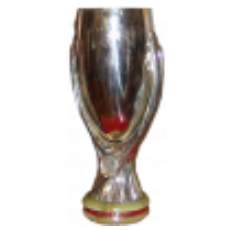
UEFA Super Cup
10/11 - 12/13 - 18/19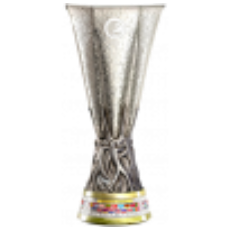
Europa League
09/10 - 11/12 - 17/18
Cup Winner
61/62
Spanish Cup
59/60 - 60/61 - 64/65 - 71/72 - 75/76 - 84/85 - 90/91 - 91/92 - 95/96 - 12/13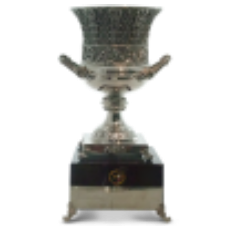
Spanish Super Cup
84/85 - 14/15
Intercontinental Cup
1974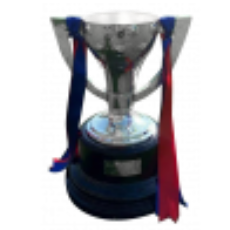
Spanish 2nd Tier Champion
01/02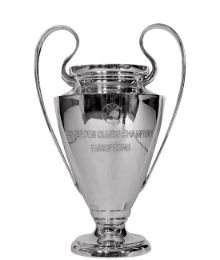
Copa Eva Duarte Cup
50/51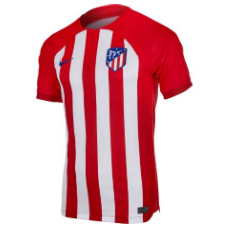
Home Jersey



